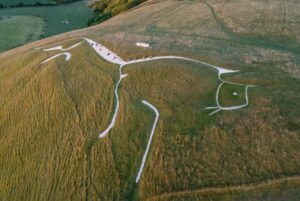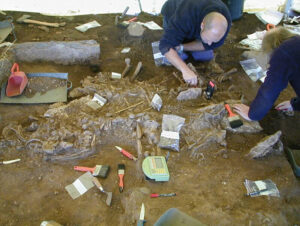DNA-based research continues to shake long-held beliefs transmitted to us from early sources. The latest upset comes from northern Britain, where analysis recently published in Plos Genetics revealed new information about the Picts.
Much of what we know about the Picts comes from medieval sources like The Venerable Bede, an English monk whose prolific chronicles and translations form one of the backbones of the British historical record.
Bede thought that the Picts — the most powerful people in northern Britain by the time the monk wrote of them in the 700s — were immigrants to the area, perhaps from Eastern Europe. More recent scholars doubted that assertion, but the question of where the Picts came from has long been a mystery.
“To date, no comprehensive analysis of Pictish genomes has been published, and questions about their biological relationships to other cultural groups living in Britain remain unanswered,” the paper’s authors write in its abstract.
“[Now] we can firmly place the genomes within the Iron Age gene pool in Britain and demonstrate regional biological affinity,” they continue.
Translation? The Picts didn’t “come” from anywhere — they came to power as a subgroup of the Celtic people living in Britain for hundreds of years.
The researchers sequenced the genomes of two Pictish skeletons, then compared the data to similarly sequenced genomes of other British iron-age people. The similarities are unmistakable, according to the paper’s authors. The Picts were British.
An honest mistake
Bede’s assumption that the Picts must have arrived from elsewhere was reasonable. In the centuries around the collapse of the Western Roman Empire, Europe experienced vast migrations of so-called “barbarians.” Many of them went on to rule the empire’s former provinces.

A stone in Scotland carved with Pictish symbols. Photo: Shutterstock
To paraphrase history podcaster Dan Carlin, one of the cool things about pre-modern history is how suddenly people who were previously unrecorded tended to arrive — fully formed and ready to kick your ass. But this is an illusion; something that happens when only certain societies are literate, and information about your neighbor’s neighbors is scarce.
So it is with the Picts, first recorded by the Romans after the empire made a province of Britain in the early 100s AD. The Romans called them Picts (literally “painted people”) because of their body-painting and tattooing customs. This would have seemed barbarous to your average Roman citizen.
Rome’s inability to bring the Picts and Scots to heel resulted in the famous loss of the 9th Legion and later, the building of Hadrian’s Wall.
The Picts outlasted the Western Romans by some 500 years until Pictish identity gave way to more contemporary Gaelic Scottish culture. Where did the Picts go? Nowhere. They’re still there in Scotland, cheerfully serving up pints and shearing sheep.






